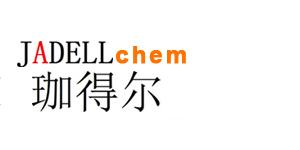Recombinant Human 4-1BBRTNFRSF9 是 TNF 受体超家族可诱导的T 细胞分子,能够促进抗原特异性T细胞的扩增,也能够阻止CD8+ T细胞的激活诱导死亡。
Synonyms
rHu4-1BBR/TNFRSF9; CD137 ; 重组人源4-1BBR/TNFRSF9
Species
HumanSource
E. coli Accession
Q07011 Gene ID
3604 Molecular Weight
Approximately 17.7 kDa AA Sequence
ERTRSLQDPC SNCPAGTFCD NNRNQICSPC PPNSFSSAGG QRTCDICRQC KGVFRTRKEC SSTSNAECDC TPGFHCLGAG CSMCEQDCKQ GQELTKKGCK DCCFGTFNDQ KRGICRPWTN CSLDGKSVLV NGTKERDVVC GPSPADLSPG ASSVTPPAPA REPGHS Biological Activity
The ED50 is <1 μg/mL as measured by human peripheral blood mononuclear cells. Appearance
Lyophilized powder. Formulation
Lyophilized after extensive dialysis against 10 mM PB, pH 8.0, 150 mM NaCl. Endotoxin Level
<1 EU/μg, determined by LAL method. Reconstitution
Reconstitute the lyophilized recombinant Human 4-1BBR/TNFRSF9 (rHu4-1BBR/TNFRSF9) to 0.1-1.0 mg/mL using sterile distilled water or aqueous buffer containing 0.1% BSA. Storage & Stability
Lyophilized recombinant Human 4-1BBR/TNFRSF9 (rHu4-1BBR/TNFRSF9) is stored at -20°C. After reconstitution, it is stable at 4°C for 1 week or -20°C for longer. It is recommended to freeze aliquots at -20°C or -80°C for extended storage. Shipping
Room temperature in continental US; may vary elsewhere. Background
Recombinant Human 4-1BBRTNFRSF9 (CD137) is an inducible T cell molecule belonging to the TNF receptor superfamily. It has been shown that signaling through CD137 by either its natural ligand, 4-1BBL, or by agonistic Ab’s costimulates activation of CD4+ and CD8+ T cells in a CD28-independent fashion, leading to activation of the NF-κB, c-Jun NH2-terminal kinase/stress-activated protein kinase (JNK/SAPK), and p38 signaling pathways. In addition to its role in promoting the expansion of antigen-specific T cells, CD137 signaling may also prevent activation-induced death of CD8+ T cells[1]. |



